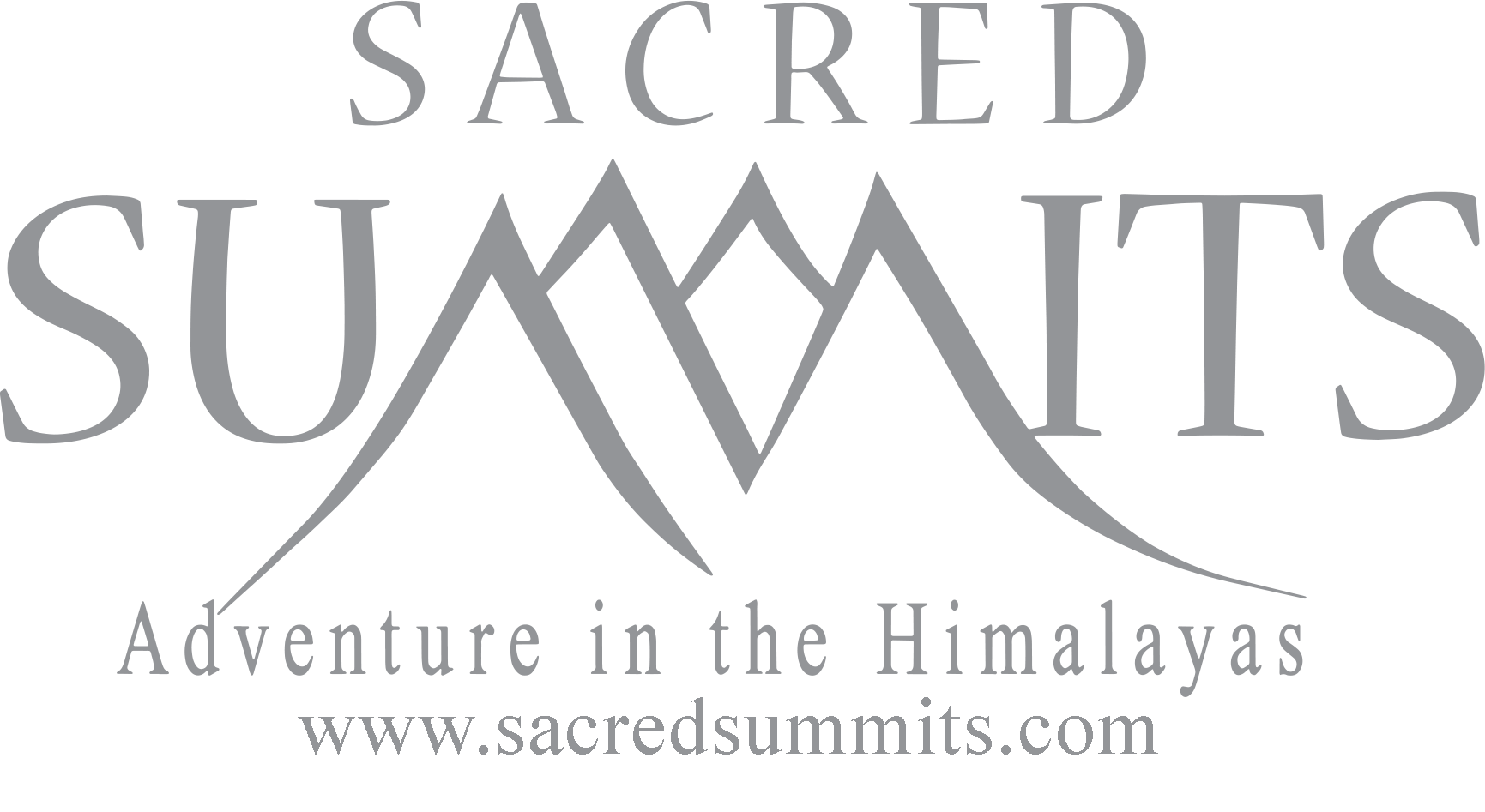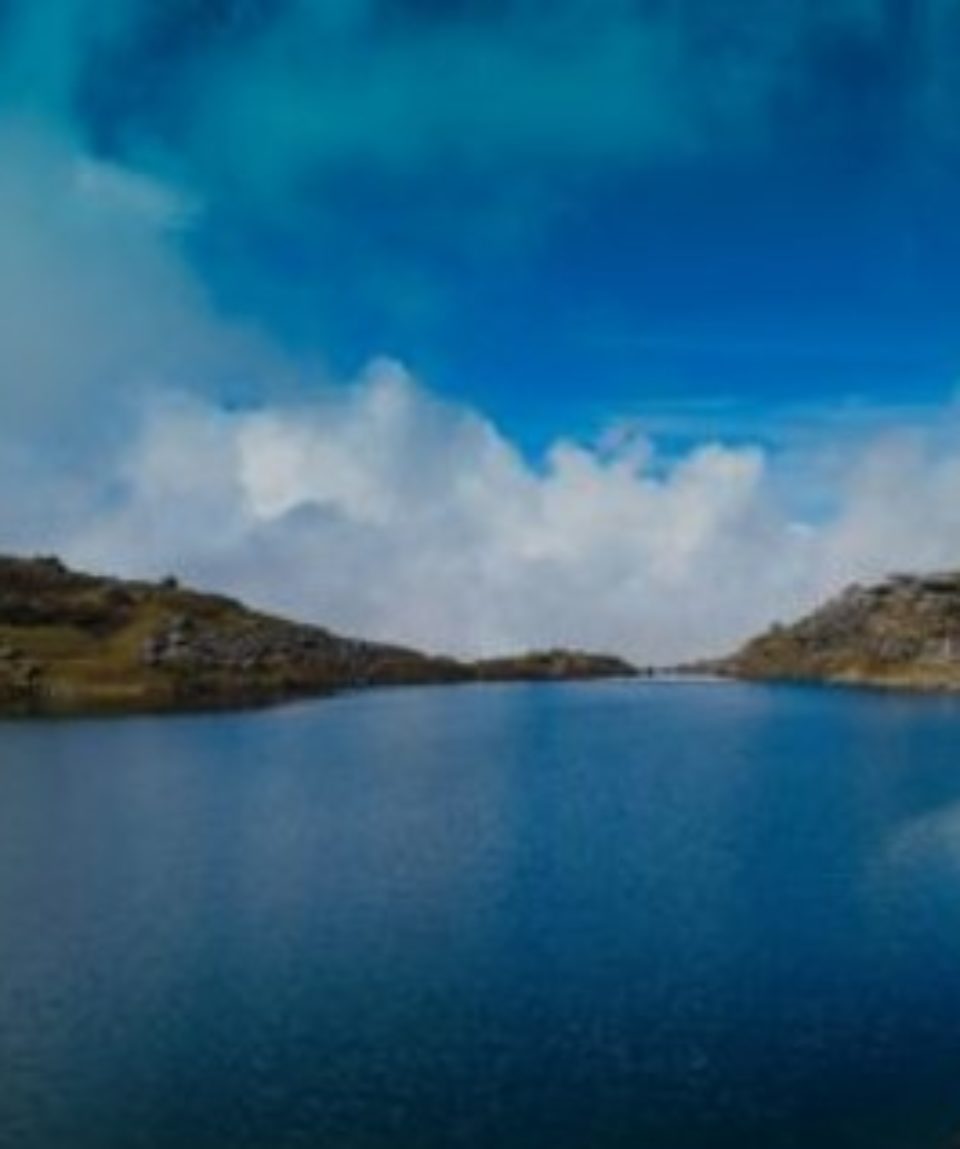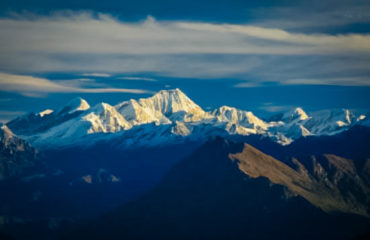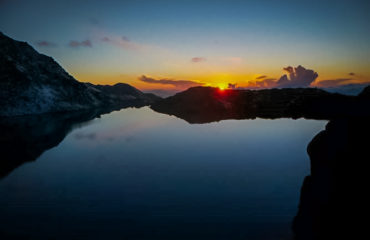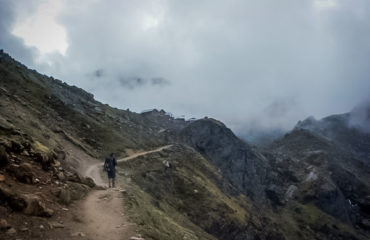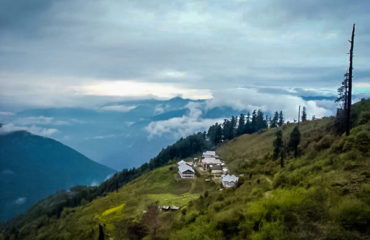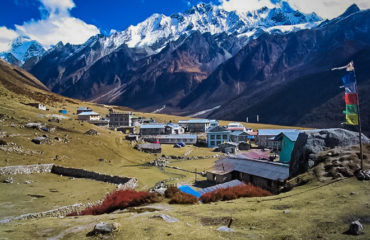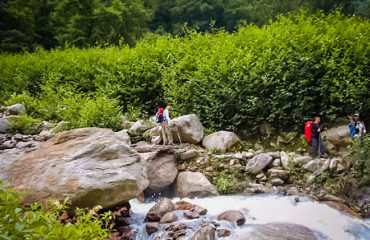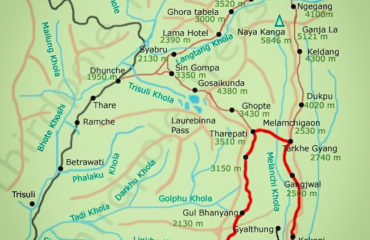Best Of Langtang Gosaikunda & Helambu
The Langtang Gosainkund and Helambu trek in Langtang region is one of the most popular trekking destinations in Nepal due to its close proximity from Kathmandu and is to the north of the valley.Beside the views of beautiful landscape of the surrounding mountains, river and forest it offers a diverse ethnic and a cultural trek. Every year during Janai Purnima (Full Moon) in August, thousands of Hindu pilgrims come here to lake holy bathe in the lake. Gosainkund is a sacred lake for Hindus and Buddhists alike, and is said to have had its origin when Lord Shiva swallowed poison to save the world. It is believed he pierced the earth with his Trishul (trident) from where a fountain of water sprang forming a lake where the burning Shiva jumped to soothe the burning in his throat. There are 108 lakes in this region some of which are named Saraswati, Bhairav, Surya and Ganesh. Gosainkund is considered one of the holiest pilgrimage sites in Nepal. The best approach to Gosainkund is through Dhunche, 132 kilometers north-east of Kathmandu. It is a narrow valley that lies just south of the Tibet border and is sandwiched between the main Himalayan range to the north and slightly lower range of snowy peaks to the south. Langtang Lirung (7246 m) dominates the valley to the north; Gang Chhenpo (6388 m) and Naya Khangri (5846 m) lie to the south; and Dorjee Lakpa (6966m) protects the east end of the valley. The area was designated Nepal’s first Himalayan National Park in 1971 and use of firewood is strictly prohibited.
-
Reviews 0 Reviews0/5
-
Vacation Style Holiday Type
-
Activity Level Challenging
-
Min 2 Pax
People
-This high and isolated region is inhabited by Tamangs whose religious practices, language and dress are much more similar to those of Tibet than to the traditions of their cousins in the middle hills. A visit to Langtang offers an opportunity to explore villages, to climb small peaks and to visit glaciers at a comfortably low elevation.
Legend: According to legend, a lama following a runaway Yak discovered the valley. Hence the name ‘Lang ‘- Tibetan for Yak and ‘Tang’ (more correctly Dhang) means to follow. Yaks still live in the valley but they now share it with trekkers.
Grade: 3
Trek Starting Point: Syabru Besi
Trek End Point: Sundarijal
Trek Duration: 12 nights / 13 days
Warning: Altitude Sickness
- Trekker Information Management System Card (TIMS) Card of USD 10 plus taxes per person
- Langtang National Park Fee of USD30.00 plus taxes per person
- Shivapuri National Park Fee USD2.5 per person.
Note : (All National parks and taxes are Subject to change without prior notice)
- Drive from Kathmandu to Syabrubesi (Pre Trek) in a private deluxe a/c vehicle accompanied by Trek leader + Sherpa Assistants
- Drive from Sundarijal to Kathamndu (Post Trek) in a private comfortable a/c vehicle accompanied by Trek leader + Sherpa Assistants
- 12 Nights / 13 Days trek inclusive of twin sharing accommodations at local tea houses / lodges with common baths (attached baths will be provided at Syabru Besi, Langtang, Sing Gompa and Chisopani), Meals (Dinner and breakfast) will be provided at the Lodges / Guesthouses and lunch will be provided at lodges / tea houses along the route.
- Services of a\n experienced and knowledgeable Trek Leader / Sirdar ably assisted by 2 Sherpa assistants who will assist clients / and ensure porter loads etc)
- Services of 4 Porters (for 8 clients) OR 5 Porters (for 10 clients) to carry clients personal belongings.
- taxes, tolls and entrance fees where applicable.
- Service fee for Sacred Summits (P) Ltd
- Nepal Visa (if applicable).
- Hotels in Kathmandu.
- Extra meals/ snack items/ alcoholic and non-alcoholic Beverages, aerated drinks, Mineral water and expenses of a personal nature such as bar bills, laundry, telephone calls etc.
- Personal Insurance for travel to Nepal.
- Emergency Rescue evacuation if needed.
- Personal Medical Supplies.
- Tips to trek staff and porters.
- Costs incurred due to cancellation of flights, strikes, landslides, etc due to unforeseen circumstances beyond the control of Sacred Summits (P) Ltd.
- Any item not mentioned in the above “The Cost includes”.
- Day 01 Drive from Kathmandu to Syabru Besi (1982 m) (6 ½ to 7hrs)
- Day 02 Trek from Syabru Besi to Lama Hotel (2380 m)
- Day 03 Trek from Lama Hotel to Langtang Village (3500 m)
- Day 04 Trek from Langtang Village to Kyanjin Gompa (3800 m) (4 hours)
- Day 05 Excursion to Langshisa Kharka (4080 m) (7 hours)
- Day 06 Trek from Kyanjin Gompa to Bamboo (1960 m)
- Day 07 Trek from Bamboo to Thulo Syabru (2600 m)
- Day 08 Trek from Chhota (Thulo) Syabru to Shing Gompa (3250 m) (6 hours)
- Day 09 Trek from Sing Gompa to Gosainkund (3920m)
- Day 10 Trek from Gosainkund to Ghopte (3440m)
- Day 11 Trek from Ghopte to Kutumsang(2460m)
- Day 12 Kutumsang to Chisapani (2181m)
- Day 13 Trek from Chisapani to Sundarijal (1350m) and drive back to Katmandu.
AFTER ARRIVAL IN KATHMANDU
- TREK BRIEFING:
On your arrival in Kathmandu, we will arrange to meet for a pre-trek briefing. Full information on all aspects of your trek, questions and doubts will be discussed. On trek your Sherpa leader (sirdar) will give you more details about the route, villages, people and other information regarding the trek.
- PACKING:
Please bear in mind the domestic airline baggage weight restrictions when packing. In this matter we request you to try and limit your baggage to around 15 kgs. (about 35 lbs.). You may leave behind part of your luggage in your hotel or our locker room before the trek, in Kathmandu. All baggage are to be clearly marked and locked. Kindly refrain from carrying or wearing valuables on the trek. You may leave them behind at the safety deposit box at your hotel or with us.
- HOW TO PACK:
Your clothes and equipment should fall into the following 4 categories:
- What you are going to leave behind in Kathmandu.
- What you are going to wear on the trail.
- What you are going to carry in your day pack.
- What you would like the porters to carry for you.
Excess clothes and luggage can be stored in your hotel’s storeroom, and valuables in the safety deposit box. Please label your luggage and make sure to take a receipt from the front desk of your hotel for all the things you would like to leave behind while you are away.
ON TREK
- FOOD AND DRINKS:
On the trek the food will consist of the food available at the lodges. Menu will be available at the lodges and the guest will have a choice of the food they like. The water provided is pressure boiled. Water bottles may be filled at night so that you have cool water to drink the following day. Mineral water in bottles can be bought on many trek routes at an additional cost.
- YOUR STAFF ON THE TRIP:
Will consist of one English speaking Sirdar or Escort who will be wholly responsible for the execution of the trip once it hits the trail. Sherpa(s) and reliable porter(s) will assist him and the numbers vary according to the size of the group.
- WE WILL PROVIDE:
For persons who purchase the whole vacation package from us, we will also provide pick-up and drop at Kathmandu Airport, domestic surface / air transport, welcome drink and hotel in Kathmandu with American breakfast. The price of the trip does not include the hire of sleeping bags and down parkas, personal expenses like laundry and bar bills, tips and gratuities (Tips to staff).
- A TYPICAL DAY:
A normal day on trek would start at about 6:00 am with a wake up call and a cup of steaming tea or coffee served in your room, followed by a bowl of hot water for washing – also delivered outside your room. Breakfast will have to be ordered before one goes to bed and the breakfast will be served at the dining room (common) and we advise guests to pack their bags and leave it outside their room so that the Sherpa boys can load them on the porters baskets.
The morning part of the trip would begin after breakfast and last about three to four hours when a stop for lunch would be made. The afternoon part of the trip will be another two to three hours to camp Relax through the evening until dinner time. After dinner you have the choice of sharing yarns with your colleagues or fellow trekkers.
- SANITATION AND PERSONAL HYGIENE:
A latrine, which is usually outside the lodge, is the most common type of toilet all through out the trek. The toilets are very basic and no flush or running water is available in the toilets. The streams and rivers, and at times hot springs along the trail helps. However, there are a few tea – house / lodges that currently have attached bathrooms. Arrangements will be made to include tea – houses with attached baths where possible / available.
- DAILY WEAR:
Your Sherpa or guide/escort can help you plan your daily wear before each day’s walk. Please carry an extra shirt or a T-shirt and a light jacket in your backpack. The mountain air is cold, so you can keep dry and warm after sweats and chills.
- WHAT TO CARRY DURING THE TREK:
Your daypack, preferably waterproof should be light, small and comfortable. All small personal items like toilet paper, water bottle, medicines, extra shirt, light warm wears, rain gear, gloves etc., that may be needed for the days trek should be packed. Your duffel will be carried by porters who may not be with you at all times.
- GENERAL MATTERS:
Your personal belongings will be looked after by our staff so please help them by not leaving them unattended in villages and other public places. The common dinning room has a fire place which is usually lit at round 5:00 pm.
We do not want to add to the large scale deforestation problem in the country. You will find the Nepalese people friendly, charming, inquisitive and quite ignorant about the west. We request you to maintain and follow the local customs.
Handouts by trekkers has led to increase begging especially among village children, affecting their independent-spirited nature. As dental hygiene is a big problem no chocolate and sweets for the children, please. The Sherpa or leader/Escort can advise you if you are keen to help locally.
- MONEY ON TREK:
You may want to buy drinks at wayside shops and souvenirs from the natives. Small change should be carried. As customary, we can help discuss in detail in the pre-trek briefing.
WHAT TO WEAR:
Light clothing are only for short treks up to seven days at altitudes up to 6000ft (1830m) during fall (autumn) from September to November and in spring between March to May. The other months at all altitudes will be cold and at most times the temperatures will be below zero.
Footwear:
You will need hiking boots with ankle support, sneakers for flat trails and flip-flops or chappals for use around the camp / guest house.
Clothes:
Shirts, T-shirts (4), blouse, etc., for day wear and a woolen shirt for evenings.
MEN: Shorts, cotton trousers, jeans, sweat-pant (recommended) etc.
LADIES: Shorts (not too short), long skirts are acceptable in well trekked areas,
jeans or trousers if preferred. Sweat pants are recommended.
Undergarments & Socks:
Thermal underwear and inner trouser for the above 7,000 ft. treks. Thick trek socks.
Warm Clothes:
A light sweater, a windcheater or light lined/padded jacket and down jacket or parka for above 7000 ft. treks. Woolen thick cap and warm gloves.
Sun / Rain:
Rain gear or umbrella and a sun hat is essential. Global warming has led to freak weather conditions and it has become more and more difficult to predict weather conditions.
Note: Umbrellas are cheap and easily available in Kathmandu.
HOW TO PACK
In The Day Pack: In The Duffel Bag:
Sun glasses Towels
Moisturizing/Sun screen lotion Flash light
Prescribed medicines Spare batteries
Camera and spare film Toiletries
Binoculars-optional Washing soap
Reading Reference book/Note book Spare clothes all wrapped in plastic bags
Pencil/Pen
Water bottles
Trek permits
Toilet paper
Umbrella/rain gear
Sweater
Additional Items:
For most treks from mid-November till mid-February and for those above 10,000 ft./3000m., in Spring and Autumn, anti-dazzle glasses or goggles with side attachments are recommended and High altitude food supplements (favorite snacks) if necessary.
NOTE:
Although Sacred Summits (P) Ltd. provides sleeping bags on request for a nominal fee, it is best to bring your own if you wish. You may have your sleeping bags checked during the pre-trek briefing to make sure that it is the right one for the trek you will be going on.
IMPORTANT NOTE:
In the event of an accident or serious ailment on a trek, helicopter evacuation can be arranged. The helicopter fare with 10% service charge and the hospital/medical charge will have to be cleared before departing from Kathmandu. A risk, release and guarantee form has to be signed before leaving on a trek with us. It is advisable to leave behind approximately US$ 1000.00 for an emergency back up measure.
INSURANCE:
We strongly recommend you to take a comprehensive holiday insurance in your own country covering adventures involving some elements of risk. However there is now, a few insurance companies providing insurance to foreigners travelers visiting Nepal.
BOOKS:
Trekking in the Nepal Himalayas by Stan Armington published by the Lonely Planets books provides you a comprehensive information on all matters regarding trekking in Nepal
The Trekking Peaks of Nepal by Bill O’Connor published by Crow Wood press in U.K. provides you with information on all matters regarding climbing peaks in Nepal.
Trekking in Nepal by Toru Nakano published by Allied Publishers gives you some insight into some important trekking areas in Nepal. A map of Nepal is enclosed in the book.

